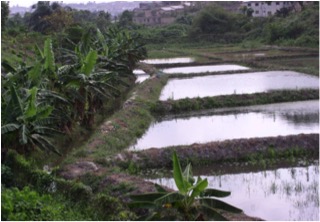|
Getting your Trinity Audio player ready...
|
The proper management of the environment is critical to ensure the sustainable use of aquaculture and fisheries along the value chain, a top environmentalist has said.
Aquaculture is the farming of animals and plants in water. There are various important steps in the aquaculture value chain that includes production, harvesting, processing, marketing, and utilisation.
Environmentalist, Dr. Sally Isyagi, while virtually addressing journalists and media practitioners who attended a Media Training Workshop organised by the African Union Development Agency (AUDA-NEPAD) in partnership with the African Union Inter-African Bureau for Animal Resources (AU-IBAR) in Zanzibar from 8 to 12 November 2021, alluded to many types of aquaculture methods that farmers can use.
She said the intensity of production can determine whether to call the aquaculture method extensive, semi-intensive or intensive. It also depends on the location determined by whether it is land-based or off-shore. The water type classifies it into fresh and marine. Species under aquaculture can be fish, crustaceans, mollusks, or plants, be they small-scale or large scale. Aquaculture species can be fed or non-fed. Others use fertilisers while some don’t.
There are a number of environmental considerations for aquaculture.
Aquaculture is done within Aquatic ecosystems which concurrently provide several goods and services necessary for fisheries, aquaculture, and other uses (e.g. household use, agriculture, industry, etc).
“Aquatic ecosystems are the ultimate recipients of pollution from human activity. Aquatic production systems can have significant environmentally and socially adverse impacts. The productivity of aquatic production systems, aquaculture notwithstanding depends on the status of aquatic resources. Aquatic resources are generally considered renewable but not infinite. They need to be properly managed if their contribution to the nutrition, economic and social well-being of the growing world’s population is to be sustained,” Dr. Isyagi said.
Irresponsible aquaculture practices lead to a number of negative environmental impacts.
“Aquaculture done irresponsibly leads to the loss or degradation of habitats such as mangrove systems. It may also lead to salinisation of soil and water. Bad practices lead to coastal and freshwater pollution, for example, the contamination of water and fauna through the misuse of chemicals and antibiotics.
“It can also lead to alteration of catchment water flows, local food webs, and ecology; and the depletion of wild resources and biodiversity for seed or broodstock as well as the spread of parasites and diseases to wild stocks. Wild genetic resources can be depleted through interactions between wild populations and cultured populations,” she said.
On the other hand, there are environmental benefits from responsible aquaculture. It results in agricultural and human waste treatment; water treatment and recycling; nutrient sink; pest control; weed control; disease vector control; desalinisation of sodic lands; recovery of depleted wild stocks; and preservation of wetlands.






